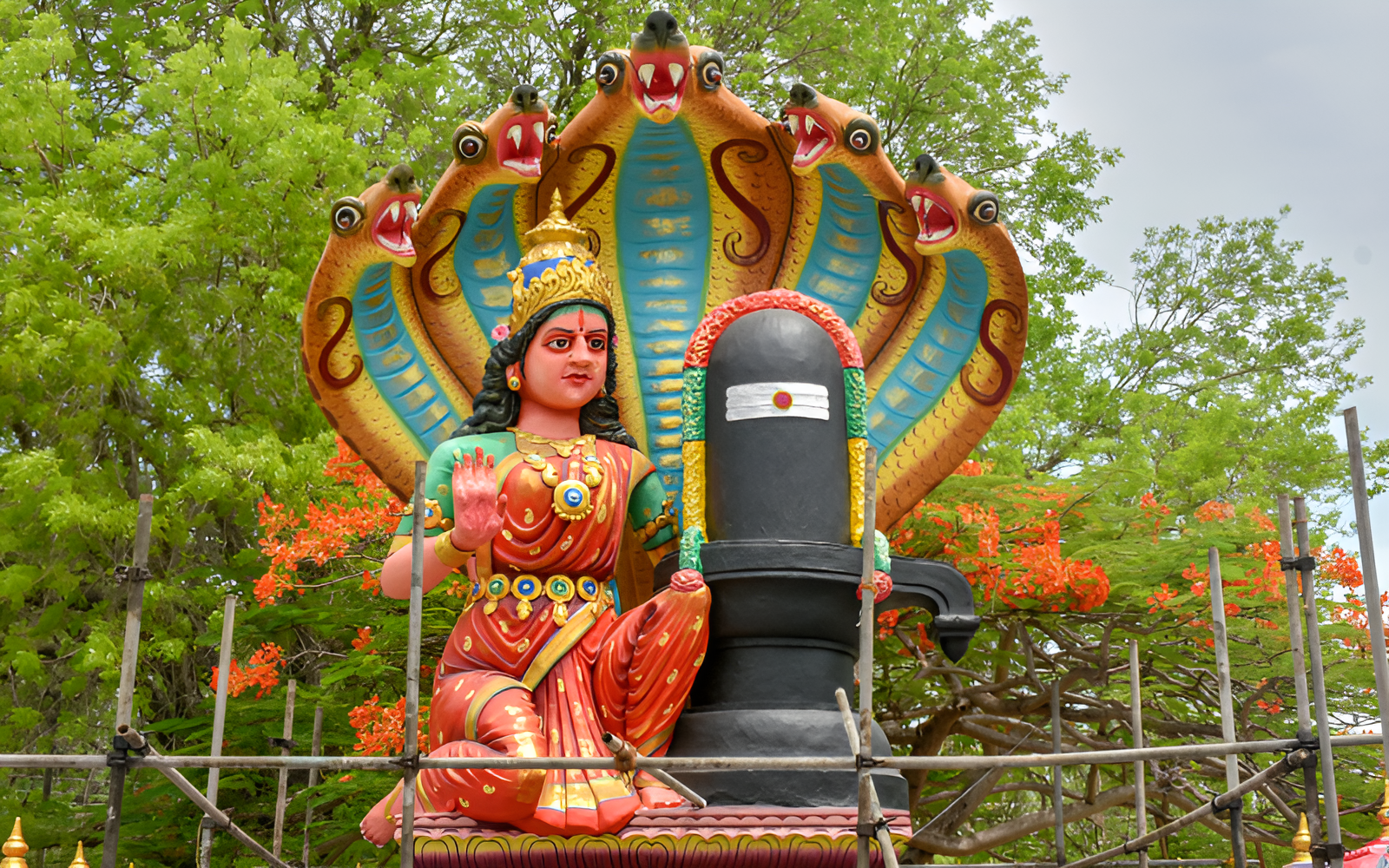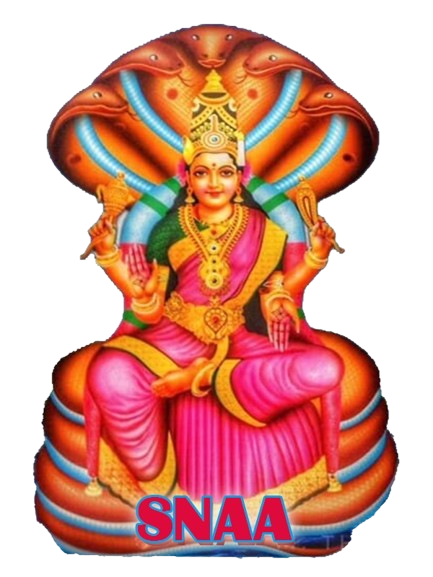
Origins and History
Nagapooshani Amman, also known as Nagapooshani Ambal or Nagapooshani Devi, holds a prominent place in Hindu mythology and Tamil culture. She is revered as the goddess of snakes and is believed to be the protector of her devotees.
The origins of Nagapooshani Amman's worship can be traced back to ancient Tamil literature and folklore. According to mythology, she emerged from the cosmic ocean during the churning of the milky ocean (Samudra Manthan), alongside other divine beings.
Throughout history, Nagapooshani Amman has been worshiped by various communities, especially in the southern regions of India and Sri Lanka. Her temples and shrines dot the landscape, serving as centers of devotion and pilgrimage.
Significance and Attributes
Nagapooshani Amman is often depicted as a benevolent deity, adorned with serpents and holding divine weapons in her multiple hands. She symbolizes protection, fertility, and healing, and devotees seek her blessings for various aspects of life.
One of the unique aspects of Nagapooshani Amman's worship is her association with snakes (nagas). Snakes are revered as divine beings in Hinduism, and Nagapooshani Amman is believed to have the power to control and protect against snake-related dangers.
Devotees often perform rituals and prayers dedicated to Nagapooshani Amman to seek protection from illnesses, obstacles, and negative energies. Her grace is believed to bring prosperity, harmony, and spiritual upliftment to her devotees.
Miracles and Divine Interventions
Stories of miracles attributed to Nagapooshani Amman abound in Hindu mythology and folklore. Devotees believe that she intervenes in their lives to protect them from danger, cure illnesses, and fulfill their heartfelt wishes.
Many devotees share personal anecdotes of experiencing Nagapooshani Amman's divine grace in their lives. These miraculous interventions reinforce the faith and devotion of her followers, inspiring reverence and awe.
Temples Dedicated to Goddess
Nagapooshani Amman is worshiped in numerous temples and shrines across India, Sri Lanka, and other parts of the world. These temples serve as spiritual centers where devotees gather to offer prayers, perform rituals, and seek blessings from the goddess.
Some of the prominent temples dedicated to Nagapooshani Amman include:
- Nagapooshani Amman Temple, Nainativu (Sri Lanka): This ancient temple is located on the island of Nainativu in Sri Lanka and is considered one of the holiest shrines dedicated to Nagapooshani Amman.
- Nagapooshani Amman Temple, Thiruvalangadu (Tamil Nadu, India): Situated in the Thiruvalangadu village of Tamil Nadu, this temple is believed to be one of the most powerful shrines of Nagapooshani Amman.
- Nagapooshani Amman Temple, Mannarsala (Kerala, India): Located in the Mannarsala village of Kerala, this temple is renowned for its unique serpent worship and rituals dedicated to Nagapooshani Amman.
- Nagapooshani Amman Temple, Pforzheim (Germany): The Nagapooshani Amman Temple in Pforzheim, Germany, serves as a spiritual hub for the Hindu diaspora community in Europe, providing a sacred space for worship and community gatherings.
Mantras Dedicated to Nagapooshani Goddess
Devotees of Nagapooshani Amman often recite mantras dedicated to her to invoke her blessings and protection. These sacred chants are believed to harness the divine energy of the goddess and establish a spiritual connection with her.
Some popular mantras dedicated to Nagapooshani Amman include:
- Om Nagapooshanyai Namaha
- Om Sarva Mangala Mangalye Shive Sarvartha Sadhike
- Om Hreem Nagapooshanyai Swaha
- Om Aim Hreem Kleem Chamundaye Vichche
Devotees chant these mantras with devotion and sincerity, seeking the goddess's blessings for protection, prosperity, and spiritual fulfillment.
Nagapooshani Amman Temple in Pforzheim
The Nagapooshani Amman Temple in Pforzheim, Germany, is a significant center of Hindu worship in Europe. It serves as a focal point for the Hindu diaspora community, providing a place of solace, prayer, and community bonding.
Devotees from various backgrounds visit the temple to pay homage to Nagapooshani Amman and participate in religious ceremonies and festivals. The temple also plays a vital role in preserving and promoting Hindu culture and traditions in the region.
